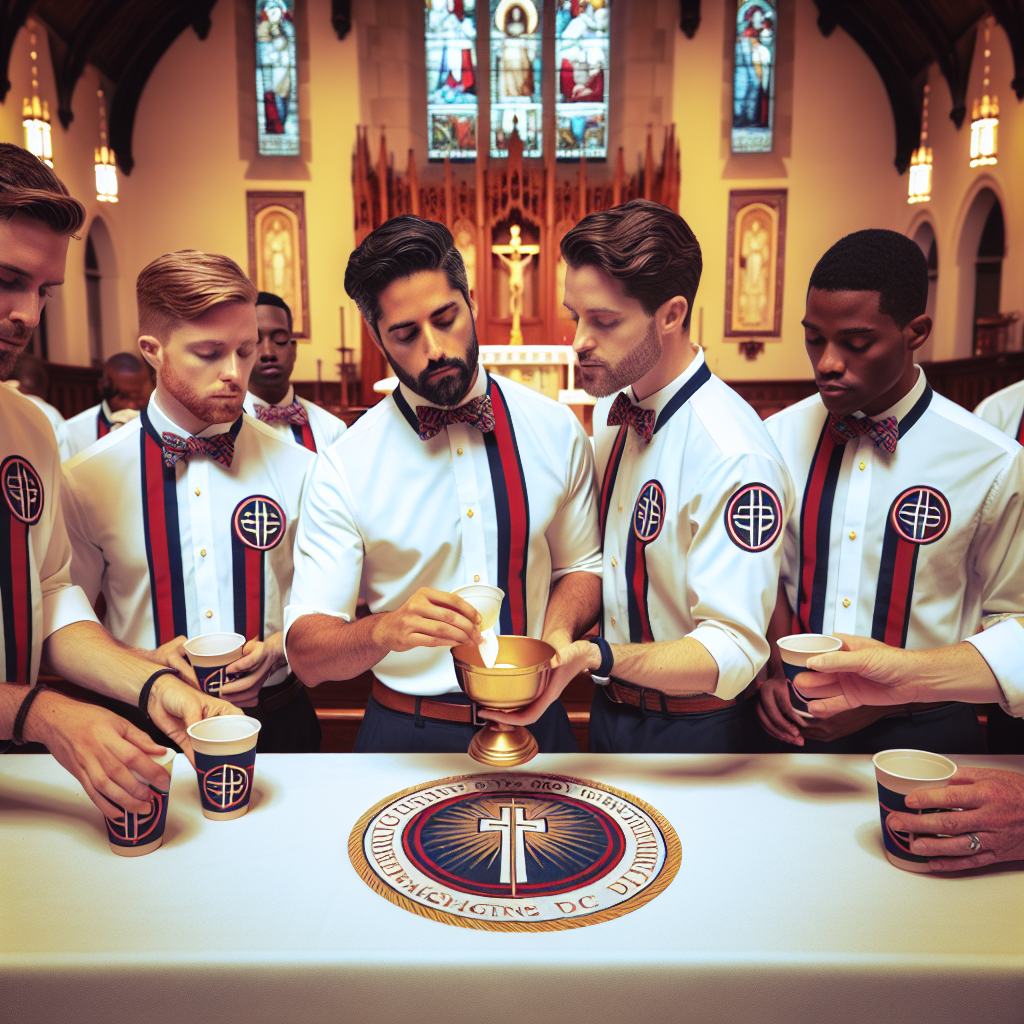In a recent incident, a parish pastor in Washington D.C. has stirred considerable controversy by inviting parishioners to attend Mass wearing their “election apparel.” This announcement, made by Father Ray Moore of St. Thomas More Parish, encouraged attendees to don clothing that reflects their political preferences as the nation approached Election Day. Reports indicate that extraordinary ministers were seen wearing Kamala Harris campaign T-shirts while distributing Holy Communion during a Sunday service, an act that some attendees and church bloggers have criticized for its blatant display of political alignment within a religious setting.
This event raises significant questions regarding the role of political expression within places of worship. While Father Moore’s intentions may have been to foster community engagement relating to the upcoming elections, critics, including members of the Archdiocese, have voiced concerns about what seems to be an endorsement of a specific political agenda. Many are apprehensive about the potential ramifications of such actions on the spiritual environment of the church. Observers have noted the enthusiastic response from some parishioners who welcomed the pastor’s provocative stance but were left pondering the implications of similar displays by supporters of opposing candidates, particularly if those signs of political allegiance had a different partisan leaning.
An interested observer, who identified themselves only as “An Archdiocese of Washington Catholic,” articulated a concern about the fairness and inclusivity of Father Moore’s directive. They questioned whether supporters of a politically opposed candidate, such as Donald Trump, would experience the same warm welcome in the church if they chose to wear related apparel. This question highlights a deeper issue about political favoritism within faith communities and whether all parishioners can feel equally accepted, regardless of their political beliefs.
The incident suggests a broader trend within certain church communities to navigate the intersection of faith and politics. Pastors and church leaders must delicately balance the importance of civic engagement with the mission of fostering an inclusive spiritual space. As observed in this case, the encouragement to wear political attire could lead to divisions within the congregation. Such challenges prompt discussions about how religious leaders can facilitate dialogue about civic responsibilities without compromising the sanctity of worship.
Furthermore, the question of the church’s position on political matters remains contentious among its members. While some might argue that faith should have a voice in political discourse, others insist that places of worship should remain neutral grounds where discussions of politics do not disrupt the core message of unity and spiritual growth. Discerning the boundary between advocacy and partisanship could help religious communities navigate these complicated scenarios more effectively.
Ultimately, this incident serves as a microcosm of the conflict that often arises when politics and religion intersect. The reactions from the parish and the surrounding community will likely shape future discussions on the appropriateness of political expression within religious settings. It calls into question how parishes can uphold their spiritual missions while being active participants in the civic landscape, a challenge that will require careful consideration and a commitment to fostering an inclusive environment for all parishioners, irrespective of their political beliefs.

